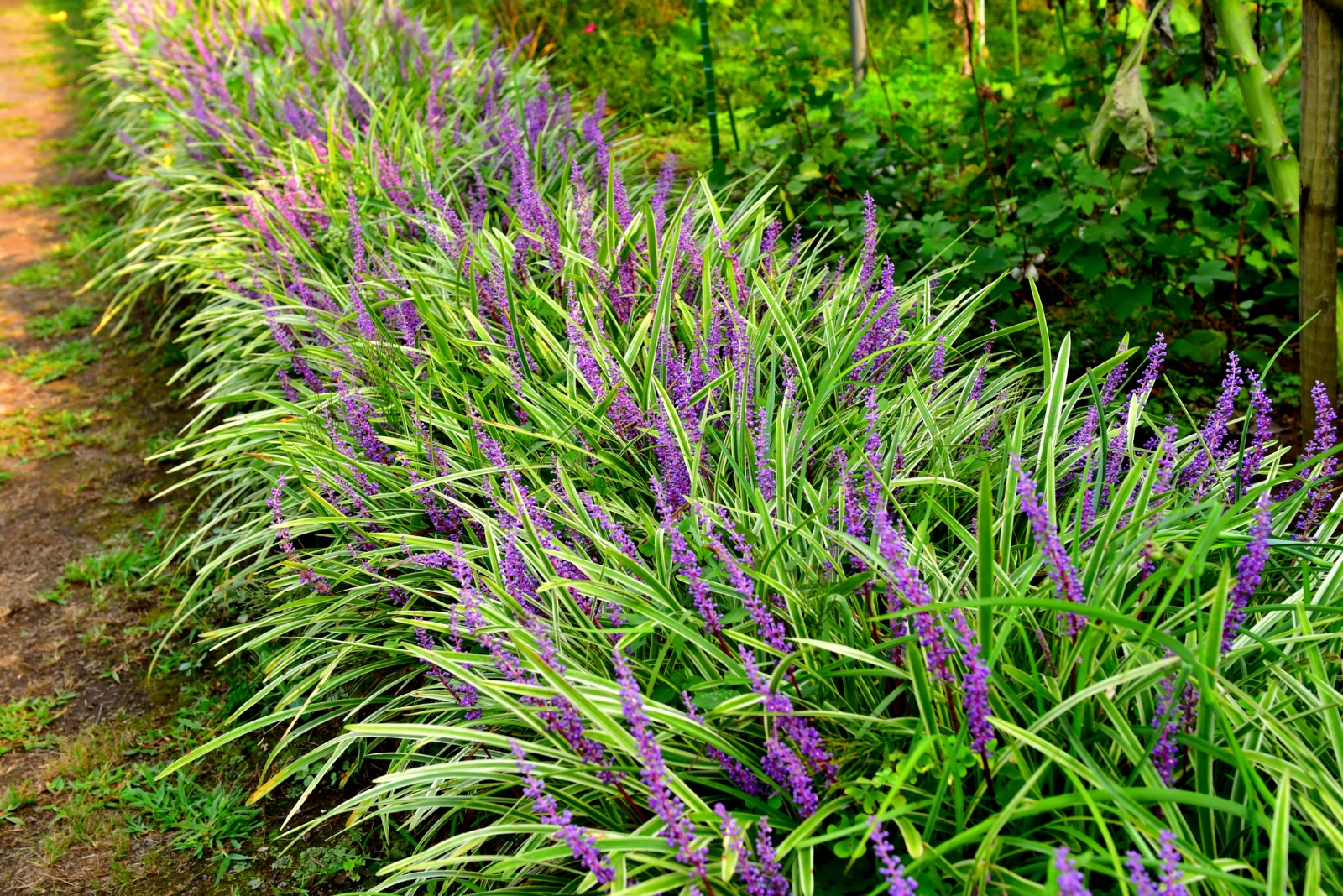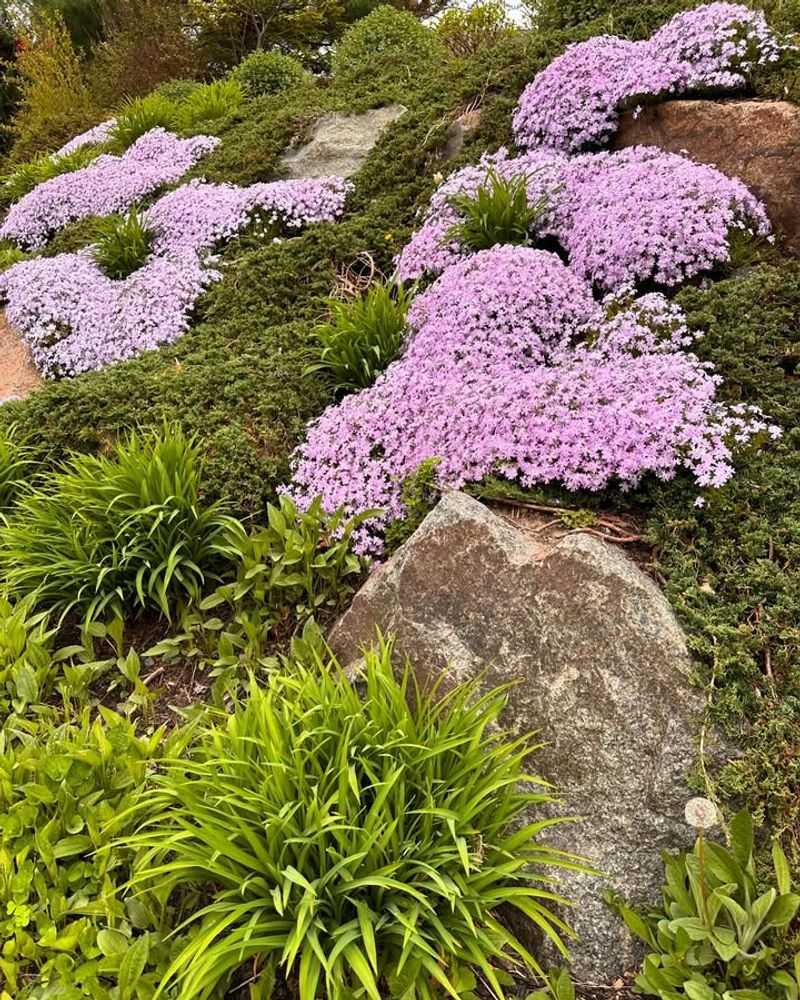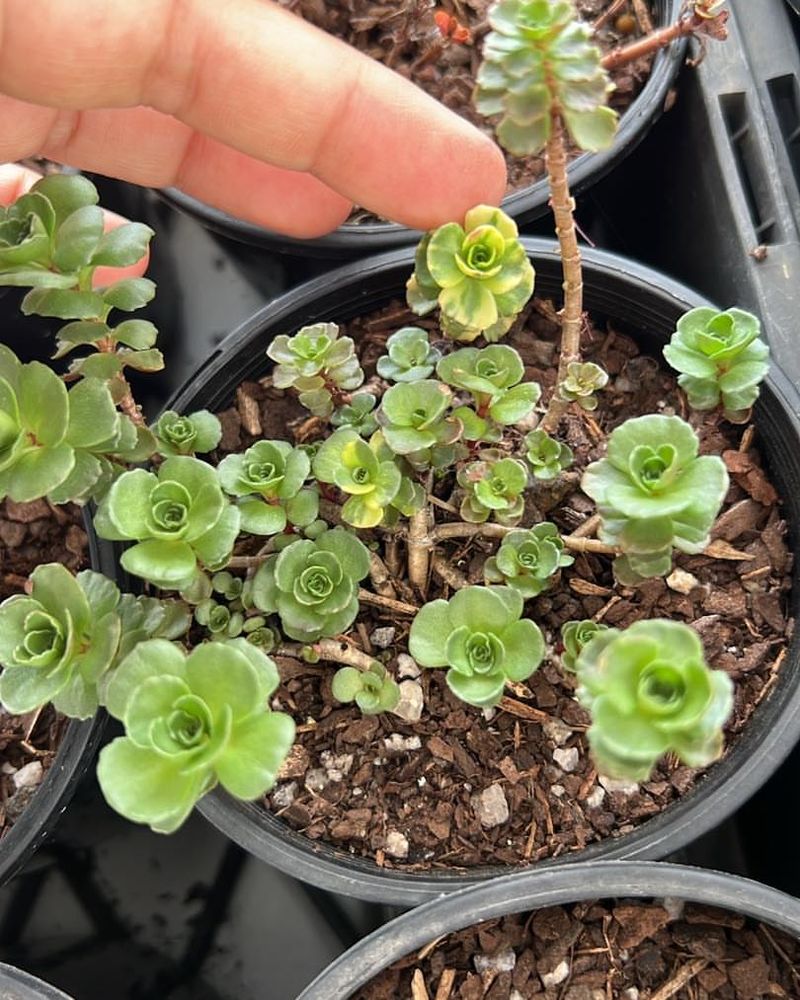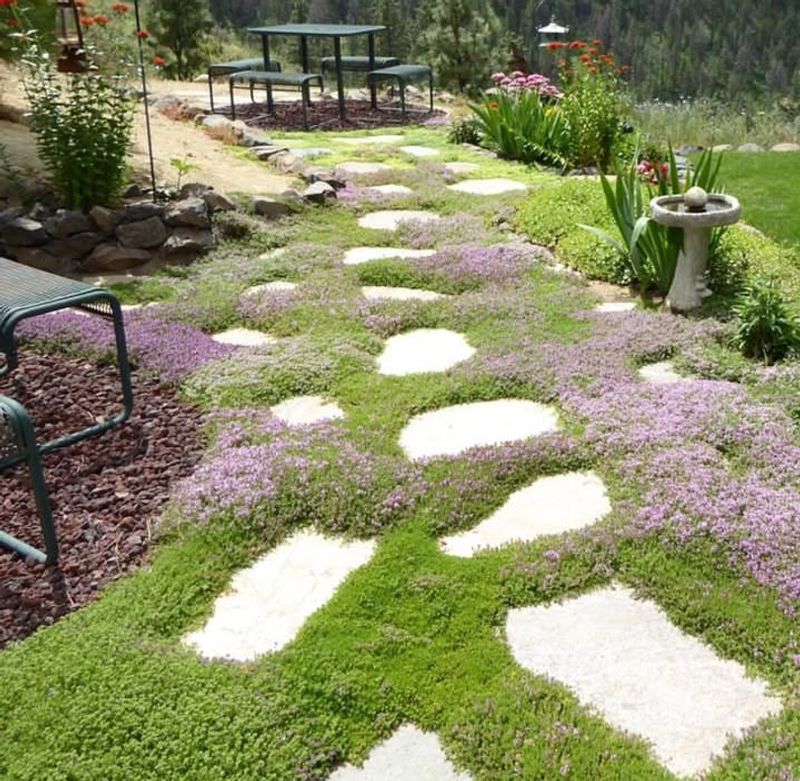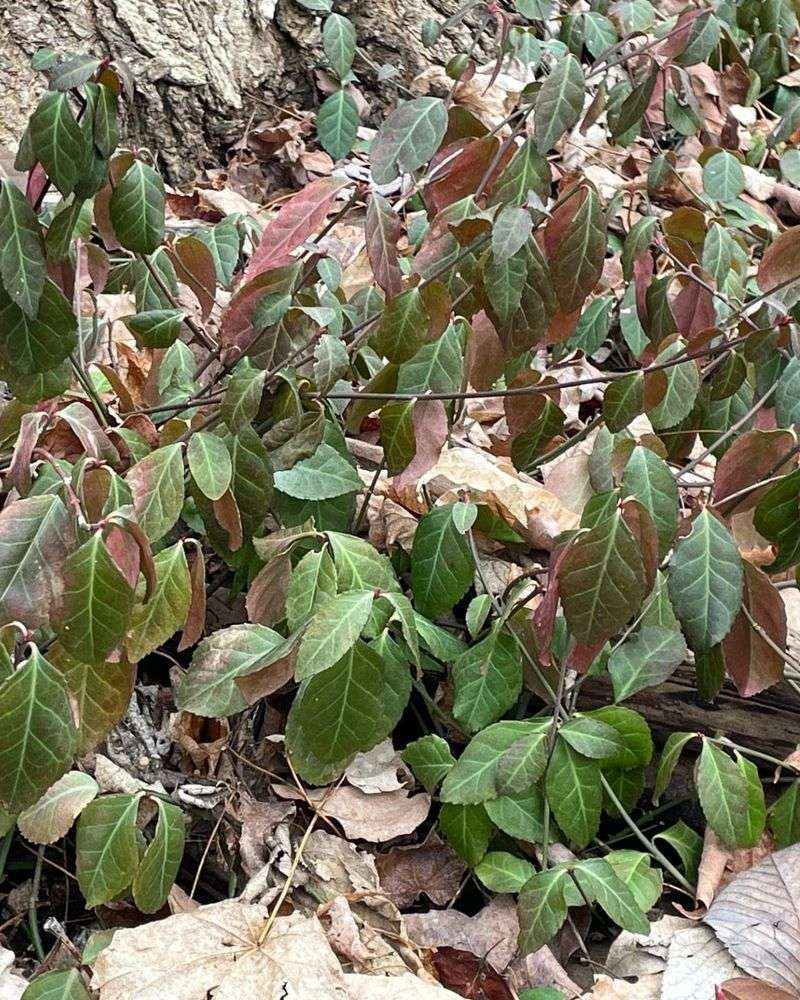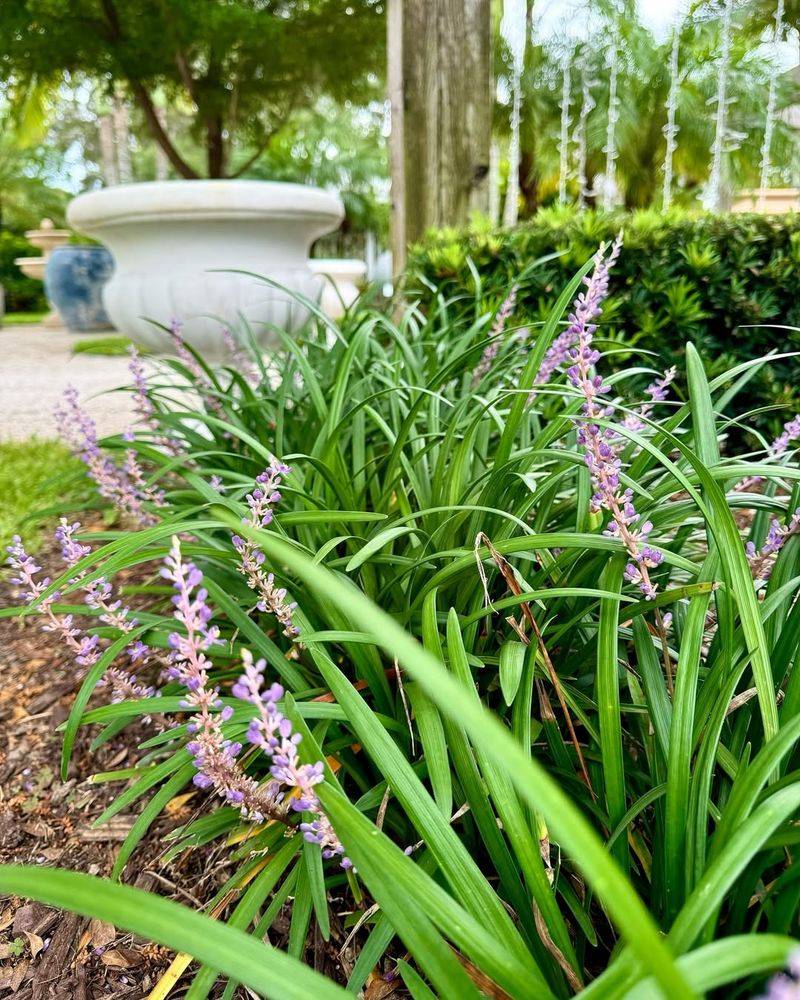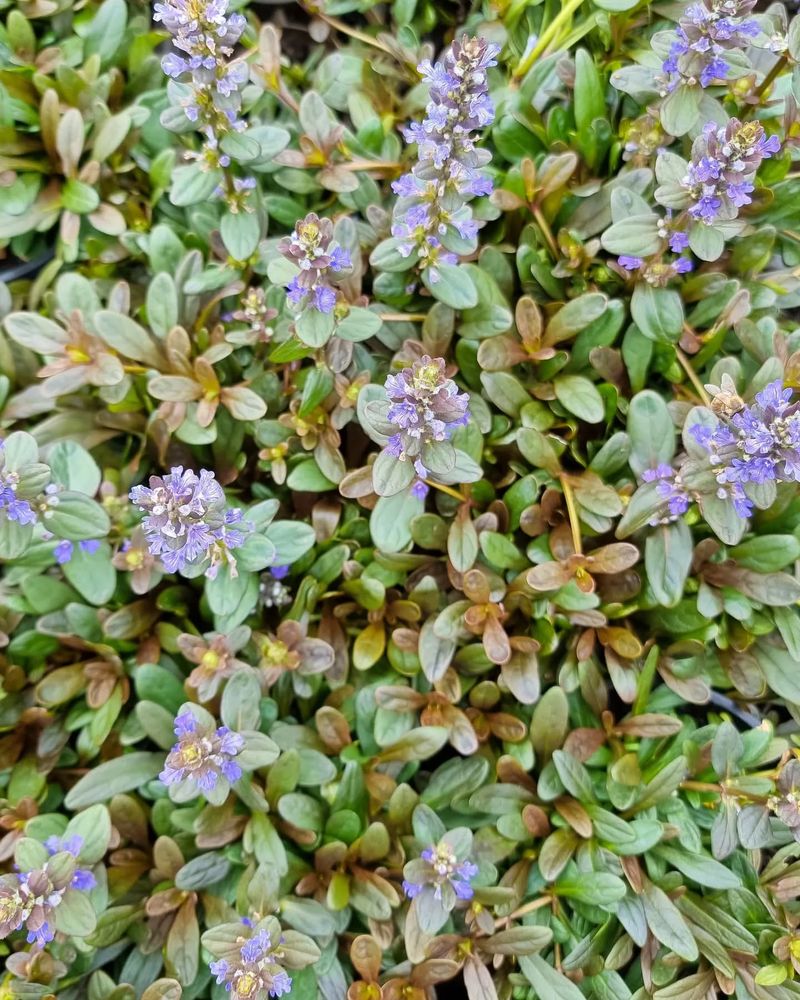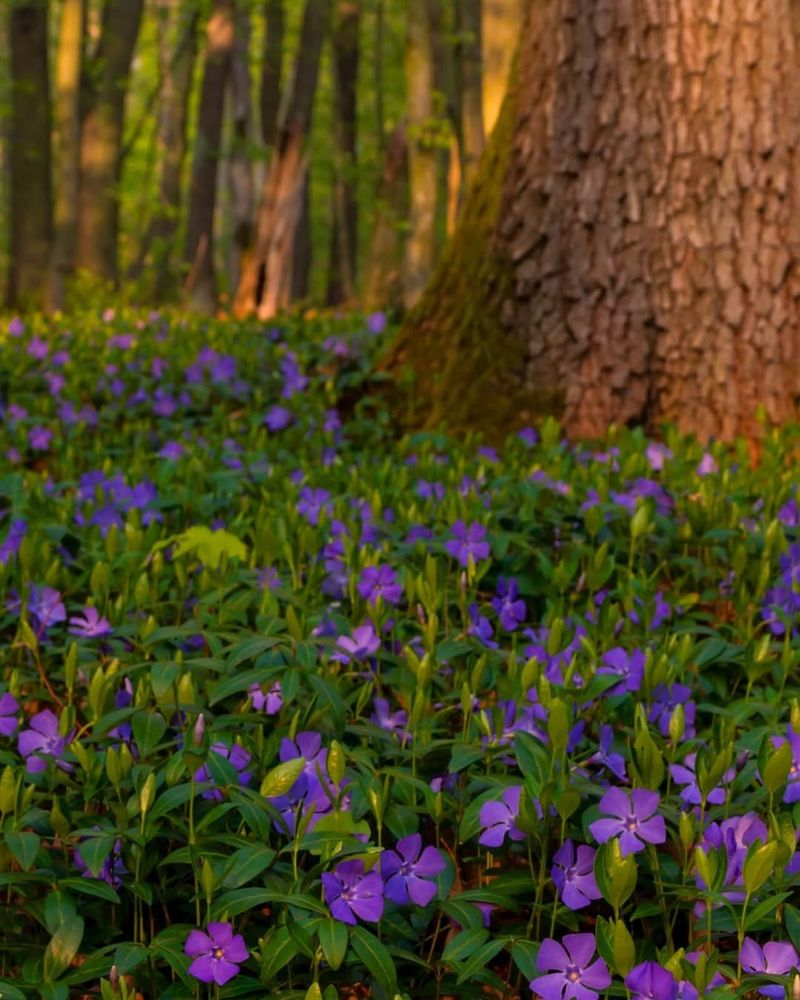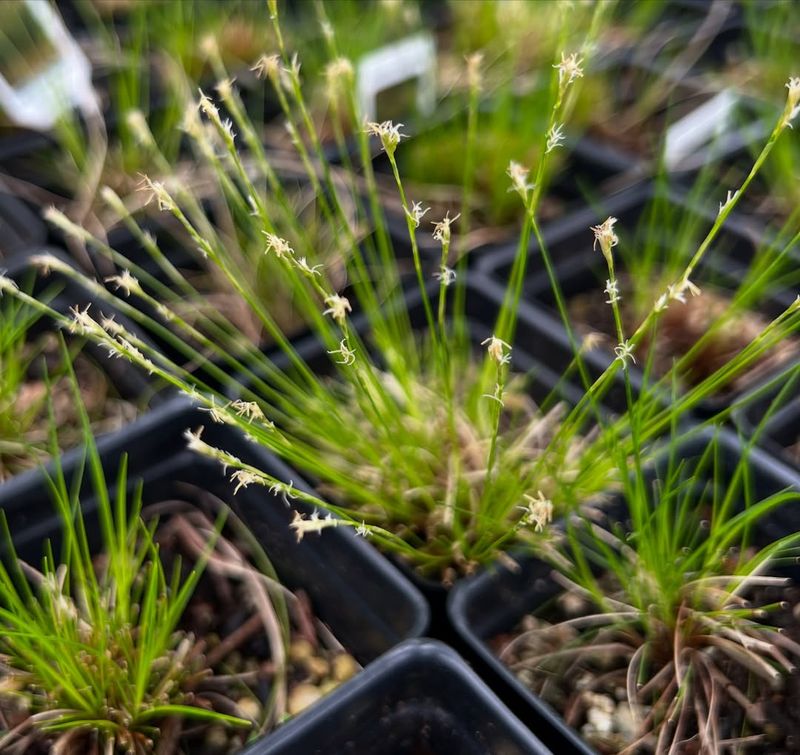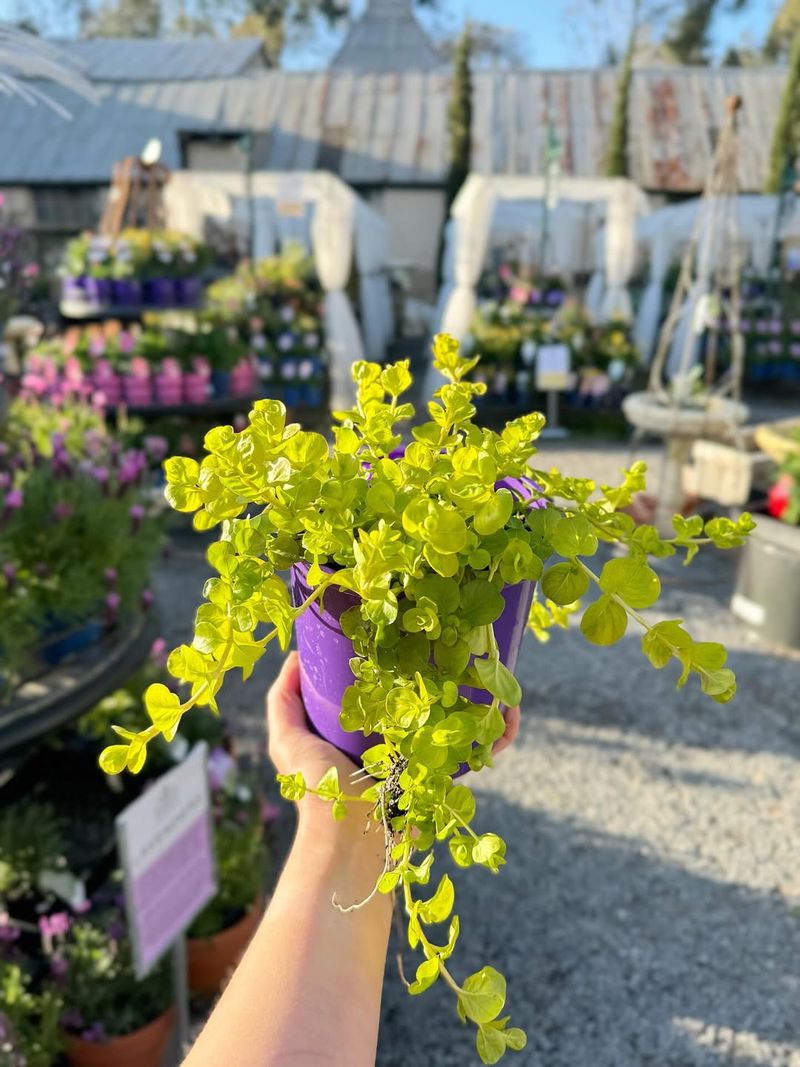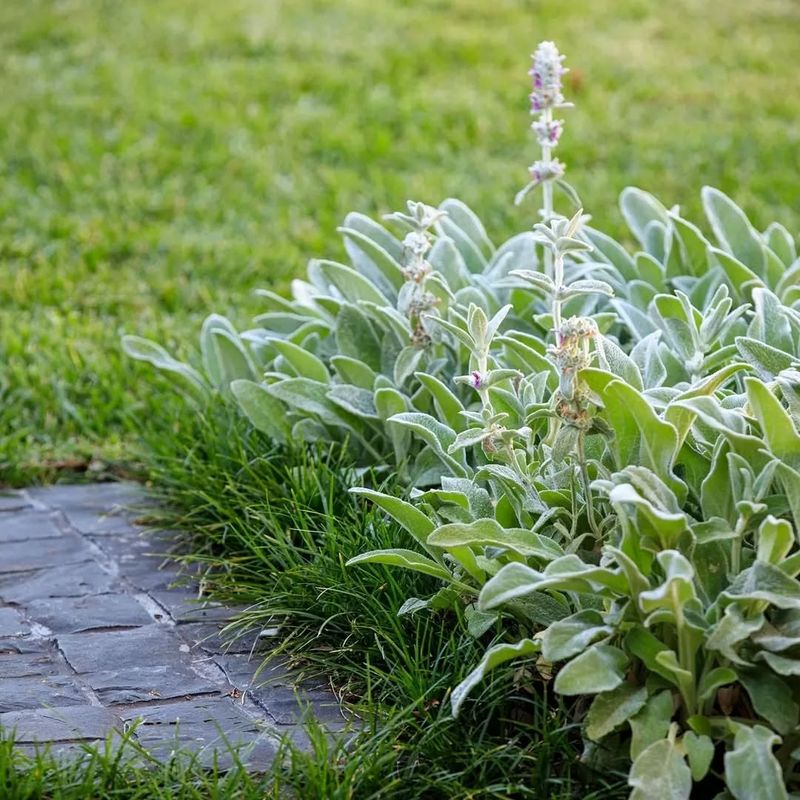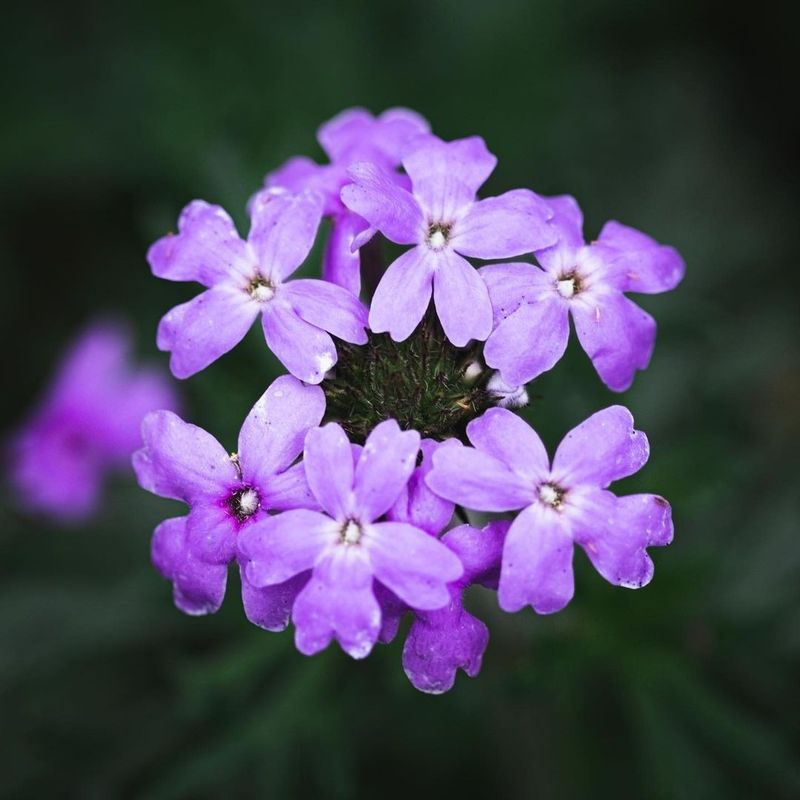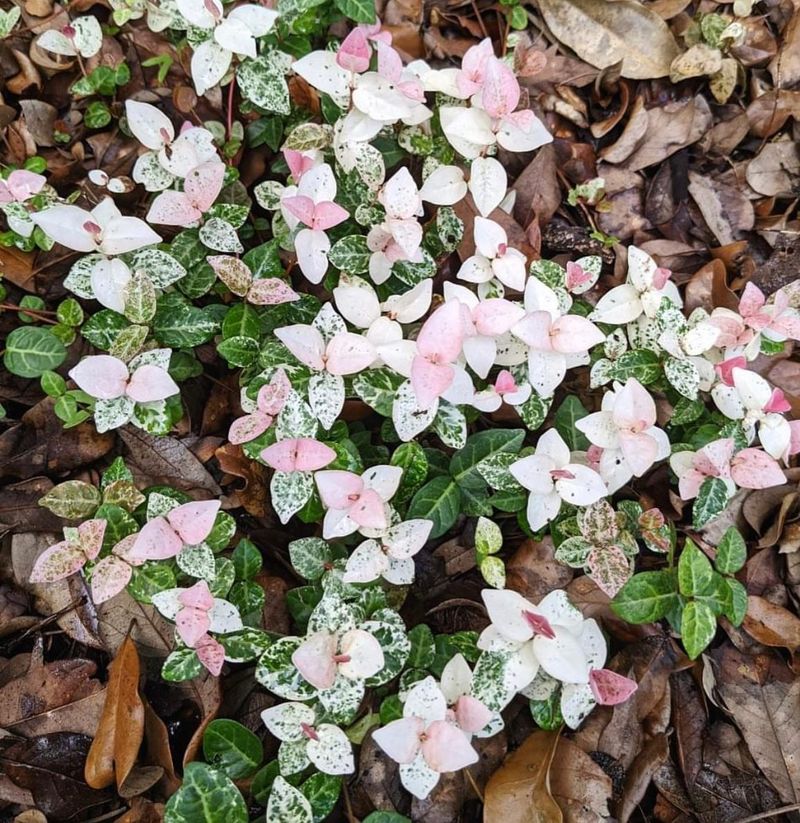Struggling with patchy, bare areas in your Oklahoma garden? Ground covers are the perfect solution for filling those empty spots while adding beauty and preventing soil erosion. Oklahoma’s challenging climate demands tough plants that can handle heat, drought, and occasional cold snaps.
These 12 fast-growing ground covers will transform those troublesome bare patches into lush, green carpets in no time.
1. Creeping Phlox
Cascading over rocks and borders like a colorful waterfall, creeping phlox creates a stunning spring display in Oklahoma gardens. The vibrant pink, purple, blue, or white flowers blanket the ground with color.
Hardy in Oklahoma’s climate, this low-maintenance perennial thrives in full sun to partial shade. Once established, it’s remarkably drought-tolerant and spreads quickly, choking out weeds while creating a dense carpet of green foliage year-round.
2. Sedum ‘Dragon’s Blood’
Ruby-red foliage makes Dragon’s Blood sedum a standout in Oklahoma landscapes. This tough-as-nails succulent ground cover laughs at drought and scorching summer heat that would wilt lesser plants.
Growing just 4-6 inches tall, it spreads rapidly to form a dense mat that effectively smothers weeds. During summer, tiny star-shaped red flowers appear, adding even more visual interest. Plant it in rocky areas, slopes, or anywhere that needs a pop of color.
3. Woolly Thyme
Imagine walking barefoot on a soft, fragrant carpet – that’s the experience woolly thyme creates in Oklahoma gardens. Tiny silver-gray leaves covered in fine hairs give this ground cover its distinctive woolly appearance and incredibly soft texture.
Perfect for planting between stepping stones, it releases a pleasant herbal scent when stepped on. Extremely drought-tolerant once established, woolly thyme spreads at a moderate pace and stays low to the ground at just 1-3 inches tall.
4. Purple Wintercreeper
Fall and winter bring unexpected drama when purple wintercreeper transforms ordinary garden spaces into vibrant displays. This versatile evergreen ground cover develops striking purple-burgundy foliage when cold weather arrives – a welcome splash of color in Oklahoma’s winter landscape.
Growing 4-6 inches tall with a spreading habit, it quickly fills bare areas under trees or along slopes. Remarkably adaptable to both sun and shade, purple wintercreeper handles Oklahoma’s clay soils and occasional drought with ease.
5. Liriope ‘Big Blue’
Grass-like but far more interesting, Big Blue liriope creates elegant fountains of arching foliage in Oklahoma gardens. Late summer brings striking spikes of purple flowers that resemble grape hyacinths, hovering above the strappy leaves.
Thriving in both sun and shade, this adaptable ground cover handles Oklahoma’s hot summers without complaint. Spreading slowly by underground rhizomes, it forms dense clumps that effectively suppress weeds while adding year-round structure to the landscape.
6. Ajuga ‘Chocolate Chip’
Chocolate-colored foliage makes this diminutive ajuga variety an unexpected treat in Oklahoma shade gardens. Small, glossy leaves form a tight carpet that spreads quickly to fill bare spots under trees or in woodland settings.
Spring brings a surprising bonus – spikes of brilliant blue flowers that seem to float above the dark foliage. Unlike larger ajuga varieties, ‘Chocolate Chip’ maintains a petite stature at just 3-4 inches tall, making it perfect for edging paths or filling spaces between larger plants.
7. Vinca Minor
Shady problem areas meet their match with vinca minor, one of Oklahoma’s most reliable evergreen ground covers. Glossy, dark green leaves create a lush backdrop for pretty periwinkle-blue flowers that appear in spring.
Spreading by runners, vinca quickly colonizes difficult spots where grass struggles to grow. Remarkably shade-tolerant, it’s ideal for planting under trees or on north-facing slopes. Once established, vinca minor’s dense growth effectively suppresses weeds while requiring minimal maintenance.
8. Oklahoma Native Sedge
Graceful arching leaves of native sedges dance in Oklahoma’s breeze, creating movement and texture in garden beds. These grass-like plants offer an eco-friendly alternative to traditional lawn grasses, especially in partially shaded areas.
Cherokee sedge (Carex cherokeensis) and Texas sedge (Carex texensis) are particularly well-adapted to Oklahoma’s climate. Forming neat clumps that gradually spread to create a meadow-like effect, native sedges attract beneficial insects while requiring far less water than conventional turf.
9. Creeping Jenny
Golden coins of foliage make creeping Jenny (Lysimachia nummularia ‘Aurea’) a treasure in Oklahoma gardens. Round, bright yellow-green leaves form chains that quickly spread to cover bare soil with a carpet of sunshine.
Perfect for brightening shady spots, creeping Jenny also works well cascading over walls or spilling from containers. While vigorous in growth, it’s easily controlled when needed. Small yellow flowers appear in summer, adding another layer of charm to this versatile ground cover.
10. Lamb’s Ear
Velvety silver leaves beg to be touched, making lamb’s ear a sensory delight in Oklahoma gardens. The soft, fuzzy foliage creates a striking contrast against other plants while quickly spreading to fill bare spots.
Extremely drought-tolerant once established, lamb’s ear thrives in Oklahoma’s hot summers and poor soils. Tall spikes of purple flowers appear in summer, attracting pollinators. For ground cover purposes, simply remove the flower stalks to maintain a lower profile.
11. Prairie Verbena
Native wildflower charm meets practical ground cover in prairie verbena, an Oklahoma-friendly plant that pollinators adore. Spreading rapidly by self-seeding, it creates informal drifts of purple-pink blooms from spring through fall.
Extremely heat and drought tolerant, prairie verbena laughs at Oklahoma’s challenging summer conditions. Growing just 6-8 inches tall but spreading up to 3 feet wide, it’s perfect for sunny spots where you want fast coverage with minimal care.
12. Asian Jasmine
Glossy evergreen leaves create a polished, manicured appearance that belies Asian jasmine’s tough nature. This versatile ground cover performs beautifully in both sun and shade, making it perfect for problematic areas in Oklahoma landscapes.
Spreading by runners, Asian jasmine quickly forms a dense mat that effectively suppresses weeds. While slow to establish in its first year, it accelerates rapidly in subsequent seasons. The attractive foliage takes on bronze-red tints in fall and winter, adding seasonal interest.

